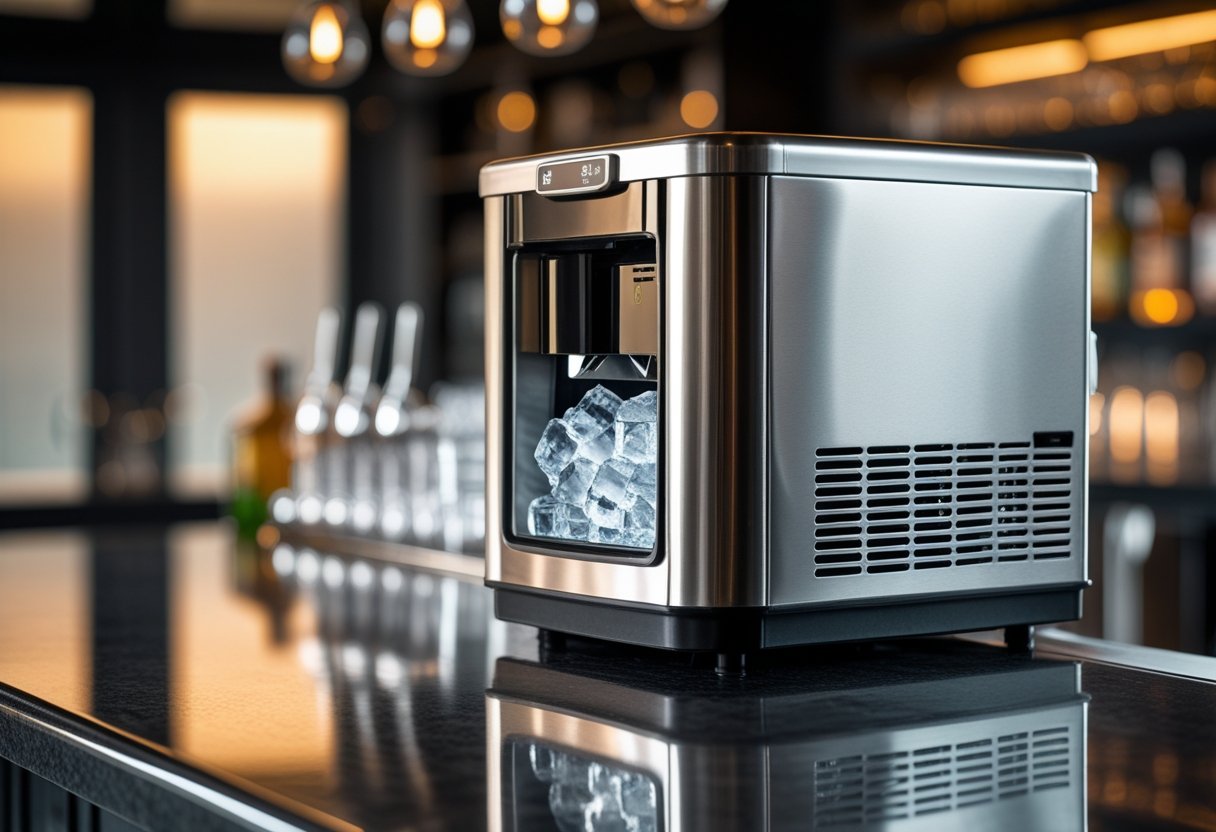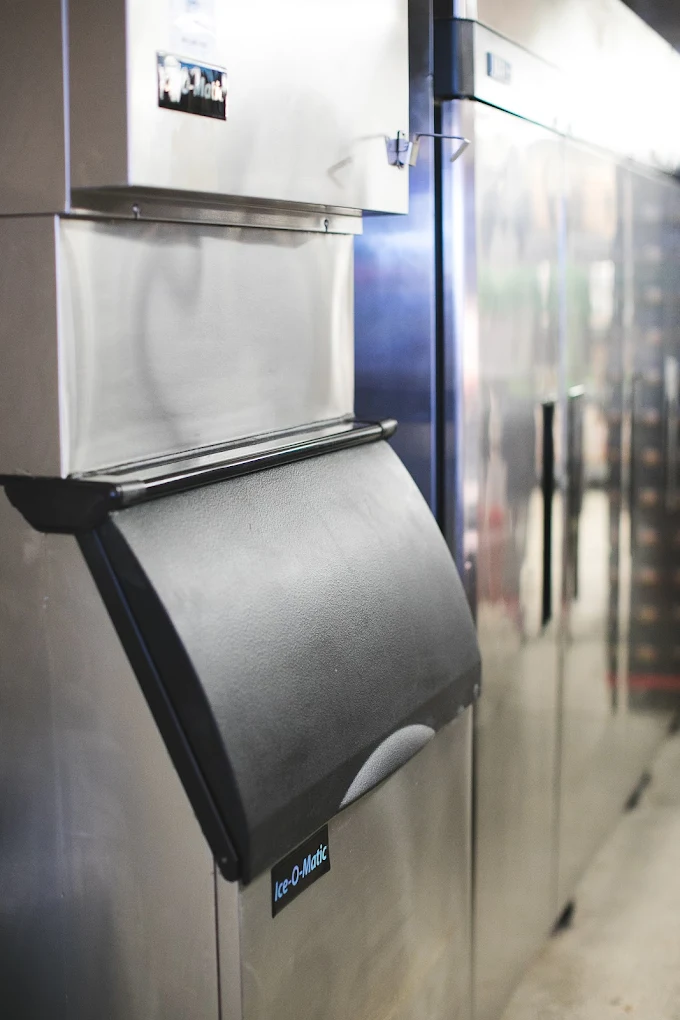proudly serving
the mid-south

What Causes Mold Growth Inside Ice Machines And How To Prevent It Easily
Mold sneaks into your ice machine because of moisture and those sneaky warm spots where it can settle in. Even though the ice machine keeps ice cold, areas like the door seals and the bin can stay just warm enough to let mold get comfortable. All that dampness, plus a few cozy areas, really sets the stage for mold to show up.
If you’re not cleaning your ice machine regularly or it’s in the wrong spot, water can pool up and make things worse. Find a dry, breezy spot for your machine and keep those seals tight—these simple moves can stop mold before it gets started. At Memphis Ice, we’ve seen firsthand how basic maintenance keeps this headache away and makes sure your ice is always fresh.
With a little care—regular cleaning and smart placement—mold doesn’t stand much of a chance, and you’ll stay on the right side of health regulations. We want to help keep your machine humming so you never have to worry about ice quality.
Common Causes of Mold Growth in Ice Machines
Mold usually pops up in your ice machine because of moisture, lazy cleaning habits, warm spots, or lousy airflow. All of these things make it easy for mold to move in, mess with your ice, and slow down your machine.
Moisture Buildup
Moisture is the big one here. Ice machines make a lot of water as they freeze and melt ice, and if water sits in places like the bin or chute, it stays wet too long. Mold loves these damp corners.
Check your drainage system—if it’s not doing its job, water will just hang out inside. Even a little leftover water can get mold started if you ignore it. After cleaning, dry everything you can so moisture doesn’t get the upper hand.
Lack of Regular Cleaning
Skip cleaning, and you’ll get mold fast. Ice machines pick up mineral gunk, slime, and bacteria inside. That slimy film is a welcome mat for mold spores.
Clean the bin, filters, and dispensers often. Take a peek at spots where water hangs around, like the chute and seals. If you skip this, mold will find a way in.
Warm Operating Environments
The inside of your ice machine might be cold, but some spots—like door seals or the bin’s surface—aren’t. These warmer areas, especially if they’re damp, are mold magnets. Heat from ovens or sunlight just makes it worse.
Keep your ice machine away from heat. Warmth plus moisture is basically an invitation for mold, so managing temperature is a no-brainer.
Improper Ventilation
Airflow matters more than you’d think. Stick your machine in a corner or crowd it with other gear, and air can’t move. Without good ventilation, moisture hangs around and mold gets a better shot.
Put your ice machine somewhere dry with space to breathe. Good placement and regular upkeep keep mold away. Air movement dries things out before mold can really get going.
Environmental Factors Promoting Mold
Mold loves when everything lines up—moisture, warmth, and those invisible spores floating around. If you stay aware of these, you’ll have a much easier time keeping mold away.
High Humidity Levels
Ice machines are already in wet environments, and if humidity climbs, you get moisture on parts like the bin or seals. Dampness here is prime real estate for mold.
Warm spots near seals make it even worse. Even with a cold interior, some parts are just warm enough for mold to get busy.
Keep your machine in a dry, breezy spot, far from heat. That helps keep condensation down and mold at bay.
Contaminated Water Supply
If your water’s carrying dirt, bacteria, or mold spores, they’ll settle in your machine fast. Mold grows wherever water drips or pools.
Use clean, filtered water to cut down on contamination. Clean and sanitize your machine on the regular to keep mold from grabbing hold.
Don’t forget about your drains—if they’re working right, they’ll get rid of melted ice and water so mold can’t set up shop. Memphis Ice has tips on water treatment and cleaning routines.
Airborne Mold Spores
Mold spores are everywhere, honestly. When they drift into your ice machine, they land on damp surfaces and start growing.
Dust, dirt, and kitchen grease can stick inside the chute or around the machine, making things even easier for mold.
Clean those hard-to-reach spots—especially the chute and inside walls. A clean environment means fewer spores can settle in and multiply.
Impact of User Practices
How you treat your ice machine changes everything. Quick cleanings and smart door habits go a long way toward keeping mold out and your ice safe.
Infrequent Maintenance
If you skip or delay cleaning, dirt, food bits, and water build up inside your machine. Over time, you’re just making it easier for mold and slime to move in. Even if your ice looks fine, mold can hide in the bin or water lines.
Clean the filters, wipe down surfaces, and sanitize the insides. A maintenance schedule helps you catch mold before it spreads.
At Memphis Ice, we suggest setting reminders to clean your machine every few weeks. Less mold means fewer headaches and better ice.
Leaving Ice Machine Doors Open
Leaving the doors open lets warm air and moisture inside, which means more condensation—mold’s favorite thing. It also exposes the ice to dust and germs.
Keep those doors closed tight. If you’re unloading ice a lot, close the door between grabs. Some machines have better seals and drains, but your habits still matter.
Good door habits plus regular cleaning keep mold away and help your machine run better. If your seals need a checkup, Memphis Ice can help with that.
Design and Mechanical Issues
Sometimes the problem is the machine itself. If water can’t drain or warm air sneaks in through busted parts, you get damp, warm spots—exactly what mold wants. These design and mechanical issues can really mess things up.
Poor Drainage Systems
If your drainage system is clogged or just plain bad, water pools inside. Mold loves standing water.
Drain channels need the right slope so water actually leaves. If the slope is off or something’s blocked, water just sits in the bin or under parts.
Check and clean your drains often to stop dirt and slime from building up. We always harp on drainage because it keeps your ice clean and your machine out of the repair shop.
Faulty Seals and Gaskets
Seals and gaskets are supposed to keep warm air and moisture out of your cold bin. When they crack or wear out, warm, moist air sneaks in and bumps up humidity inside.
That extra moisture makes mold show up, especially around seals and chute edges. You might spot water droplets or fog inside when this happens.
Check your seals often and swap them out if they’re looking rough. Keeping things sealed tight keeps moisture—and mold—out of your machine.
Consequences of Mold Growth in Ice Machines
Mold in your ice machine can really cause trouble. It’s not just gross—it can make people sick and ruin the taste (and smell) of your ice. Ignore it, and you could face health issues, unhappy customers, and maybe even legal headaches.
Health Risks for Users
Mold can actually make people sick. When it grows, it can contaminate your ice with germs and bacteria. Using this ice can cause allergies, breathing problems, or infections—especially for folks with weaker immune systems.
The cold, wet insides of an ice machine are perfect for mold to multiply. That’s why cleaning and maintenance matter so much. If someone gets sick from your ice, your reputation’s on the line.
Taste and Odor Problems
Mold isn’t just a health risk—it makes your ice taste and smell weird, too. That musty odor will end up in your drinks, making them taste off or even spoiled.
If your ice tastes or smells strange, people will notice. That’s bad news whether you run a bar, restaurant, or hotel. Clean and dry your machine to keep your ice tasting right.
At Memphis Ice, we’ve helped businesses stay safe and fresh with ice machine care for over 40 years. Trust us, regular upkeep is worth it.
Preventing Mold Issues in Ice Machines
Mold loves damp, warm spots inside your ice machine. The trick is to clean often—especially the bin, chute, water reservoir, and seals where moisture gathers.
Try these steps to keep mold away:
- Clean the ice bin weekly to get rid of slime and junk.
- Sanitize the dispenser chute so bacteria can’t build up.
- Check and dry door seals to keep out moisture and warmth.
- Flush water lines now and then to stop minerals and germs.
Drying matters just as much as cleaning. After you’re done, let the machine air out if you can.
At Memphis Ice, we’ve helped Mid-South businesses keep ice safe since 1977. Our team can set up a cleaning and maintenance plan that fits what you need.
If you notice weird smells or slime, don’t wait. Professional maintenance keeps your ice pure and your machine running right. Reach out to a Memphis Ice expert and relax knowing your ice is in good hands.
Frequently Asked Questions
Mold in ice machines shows up in certain ways, and you can get rid of it with the right cleaning steps. Stopping mold from coming back means watching out for moisture, temperature, and staying on top of regular care. Some mold types need special attention to remove safely.
What are the common signs that indicate mold presence in ice machines?
Look for slimy patches or black spots inside the bin or on door seals. Ice that smells weird or tastes off is another clue. Sticky or wet spots near water lines can mean mold’s around, too.
How can one safely remove mold from an ice maker?
Turn off and unplug your machine first. Take out all the ice and remove any parts you can. Wash these with warm water and a mild cleaner or vinegar. Wipe down the bin, seals, and inside walls. Let everything dry before you put it back together and start up again.
What are effective strategies to prevent mold formation in ice makers?
Keep the machine dry when you’re not using it—leave the door open a bit if you can. Clean every few months to catch mold early. Check door seals and fix leaks fast since moisture is mold’s best friend. And actually using your ice machine helps keep water moving so it doesn’t get stale.
Why is black mold appearing in my ice maker, and how do I address it?
Black mold tends to show up in damp, shadowy spots inside the ice bin or around the seals. If moisture sits there too long and you don’t clean it, mold just takes over. To get rid of it, grab some gloves and a food-safe bleach cleaner, then scrub those problem areas. Make sure you’ve got some airflow while you’re at it.
Are there health risks associated with mold in ice machines?
Definitely. Mold can trigger allergies or mess with your breathing—especially if you’re sensitive or your immune system isn’t up to par. Plus, it can make your ice taste weird and just isn’t safe. So, yeah, keeping that machine clean really matters.
What conditions allow pink mold to flourish in ice machines?
Pink mold tends to show up where there’s moisture but not much cold—think door gaskets or spots near warmer parts of the machine. This stuff is actually a type of bacteria that forms sticky films. If you stay on top of cleaning and fix any leaks or warm areas, you can usually keep pink mold from settling in.
If you’re in the Mid-South, Memphis Ice can help with cleaning and maintenance so your ice stays fresh and safe all year.
Recent News

What to Check Before Calling for Emergency Refrigeration Repair to Save Time and Money

Why Preventative Service Plans Save Time and Money By Avoiding Costly Repairs

Why Proper Ventilation Is Critical for Ice Machine Longevity: Simple Tips to Keep Your Ice Maker Running Smoothly

Why Regular Ice Machine Service Prevents Downtime and Keeps Your Business Running Smoothly

Why Restaurants Should Have Backup Cooling Solutions for Smooth Kitchen Operations

Why Routine Inspections Prevent Refrigeration Emergencies and Save You Time and Money



